Illuminated Manuscripts with Decorated Initials
Illuminated manuscripts can be a wealth of inspiration even for modern designers!

Some of the most exquisite and elaborate lettering was created for the illuminated manuscripts of the Middle Ages. These hand-made books not only consisted of text, but also painted illustrations and borders. Many included initial letters which were painstakingly painted by hand, and lucky for us, have withstood the test of time.
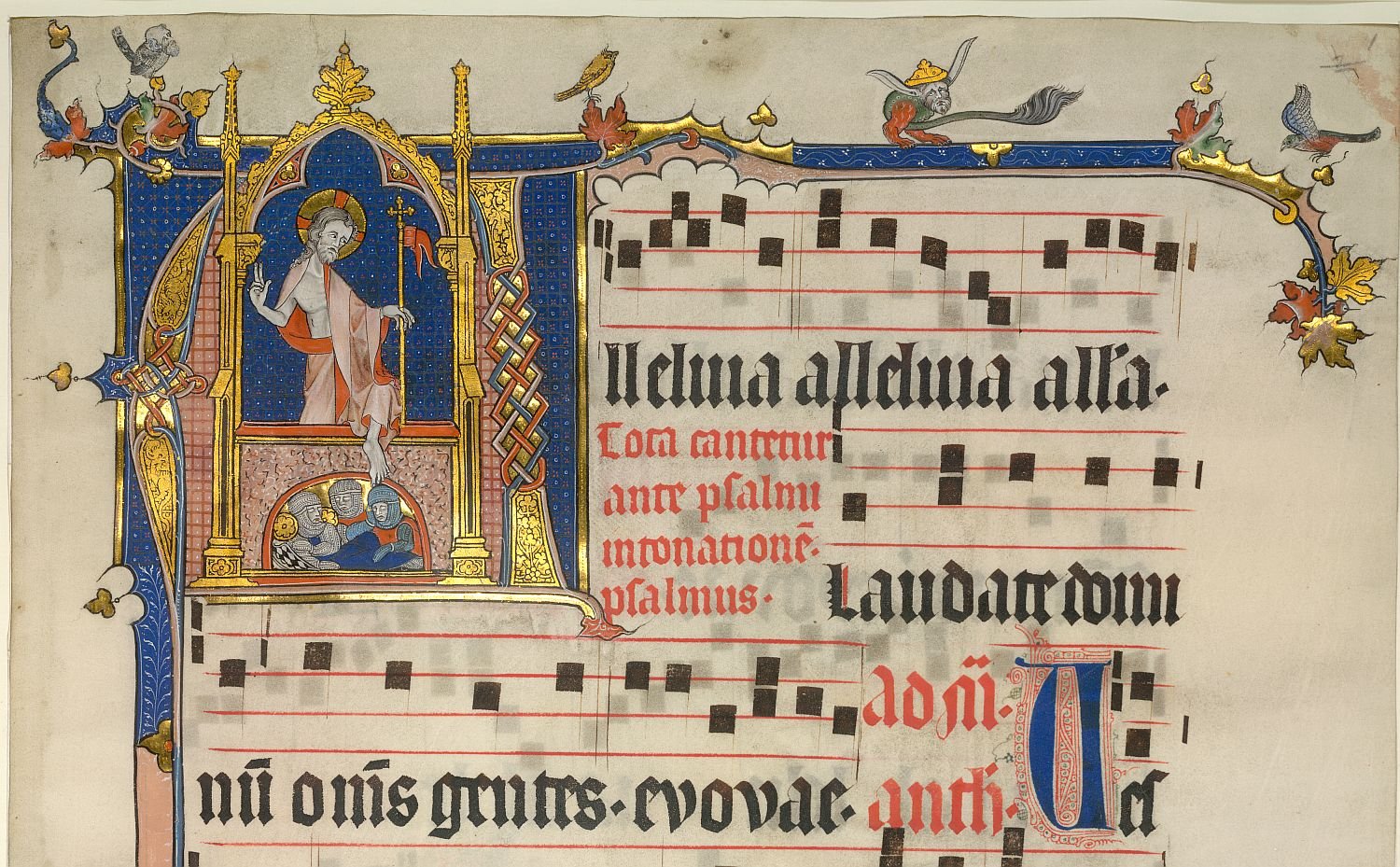
An excerpt from the Yates Thompson manuscript, Book of Hours, 2nd quarter of the 14th century. A Book of Hours was a Christian devotional book of prayers, readings, and psalms popular in the Middle Ages, and is the most common type of surviving medieval illuminated manuscript.
A Brief Background
Books today are available to almost everyone, as they are mass produced and affordable, as well as easily borrowed from libraries. In the Middle Ages, however, the process for making books was dramatically different and therefore books were not readily available to the general public, the majority of which did not know how to read anyway. Books were all written and drawn by hand, with each step done by a different person: scribe, rubricator, illustrator, etc. They were known as illuminated manuscripts: “illuminated” from the Latin word lumen, meaning light, and “manuscript” from the Latin words manus meaning hand and scribere meaning to write. So an illuminated manuscript is one in which the text is embellished or enhanced with the use of decorative elements—including initials, borders, and other illustrations—using luminous colors, often including gold and silver.
These precious and expensive books were most commonly associated with religious manuscripts, and were often created in monasteries by monks and commissioned by wealthy patrons. Bibles were a frequent subject for illumination. The use of gold leaf or foil, gold specks or dust, or silver, which is applied with a brush, is a characteristic feature of most books from the Middle Ages.
Many of these manuscripts contain illustrated initial letters that frequently were seen at the beginning of a chapter or section. Decorative initials found in mid-century manuscripts are usually one of three kinds:
Historiated Initial: An initial letter that contains within it a scene or figure related to the text.
Inhabited Initial: An initial letter that contains human or animal figures that are decorative only and bear no relation to the text.
Decorated Initial: An initial letter that is decorated and embellished but does not necessarily contain a picture or decoration that relates to the text.

A close-up of the letter P, an historiated initial depicting Peter in an illuminated Latin bible, 1407 AD. Colored with paint and gold leaf.
The Process
The production of an illuminated manuscript began with the text, which was usually written first. Then, sheets of parchment or vellum (animal hides specially prepared for writing) were cut down to the required size. The layout of the book was then planned, including placement of the text, initial letters, borders, and any other illustrations and decorative elements. Next, the grid for each page was lightly ruled with a pointed stick, after which the scribe went to work using ink and either a sharpened quill feather or reed pen. Next, the illuminator (or illustrator, as we now call them) created all the remaining elements.
These amazing manuscripts are a fantastic source of inspiration for today’s designers. Initial letters and other decorative elements are still used in books, magazines, annual report, brochures, and any other instance where eye-popping graphics serve to draw attention to text and help illustrate the content. Shown below is a selection of illuminated manuscripts with a broad range of initial letter treatments.

This combo initial/border treatment is from a book dealing with time, astrology, and astronomy, from Harley MS 4350, f. 4.

This dense, intricately decorated initial is from Arundel MS 66, f. 148, an astronomical/astrological text.
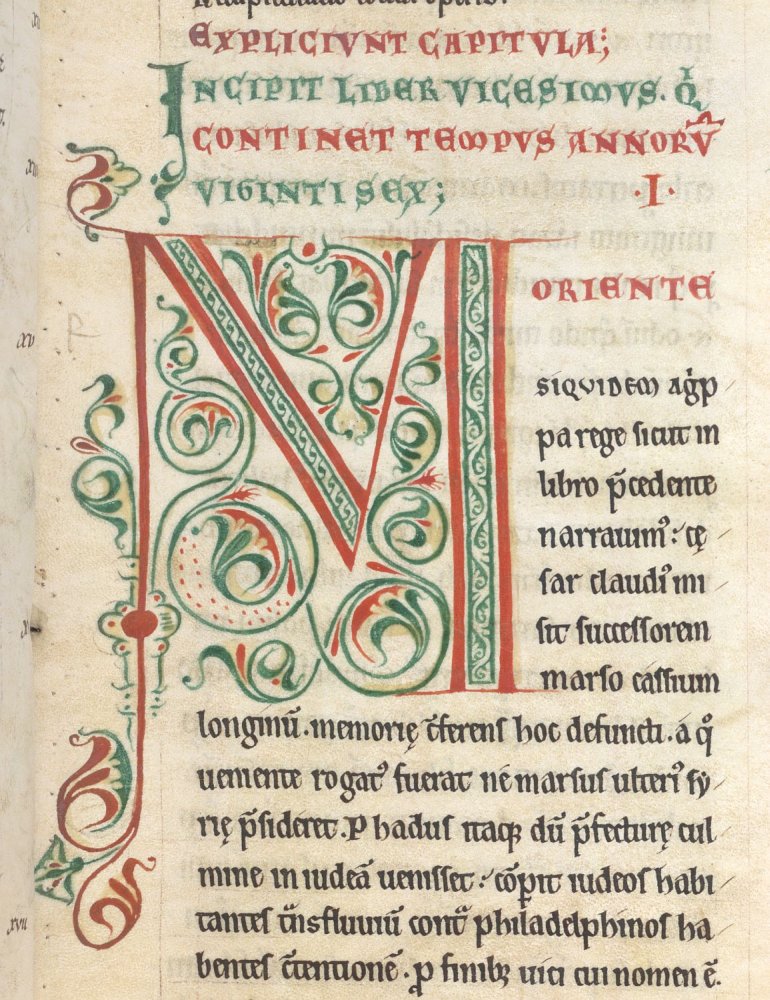
This decorated initial illustrates arabesque, a style of ornamentation consisting of fine, linear foliate designs in curvilinear patterns. Arundel MS 94, f. 75.

This exquisite initial is from a theology textbook by Petrus Lombardus, a scholastic theologian and Bishop of Paris, c.1095 – 1160.

A page from the Mishneh Torah, 12th-century religious work by the philosopher Maimonides. Estimated to have been created in the mid-1400s.
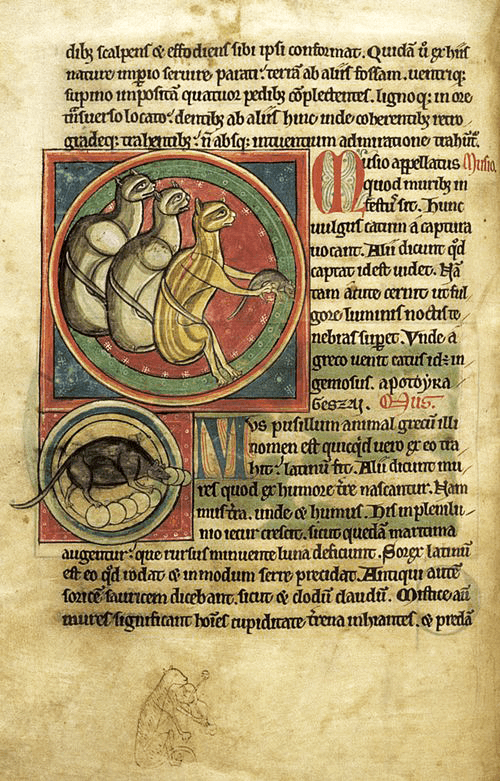
An initial containing cats catching mice, and mice stealing eucharistic wafers, from a bestiary, England, 2nd quarter of the 13th century, Harley MS 4751, f. 30v.

This combined border and initial uses the trompe l’oeil technique where certain elements are made to appear to be resting on or projecting from the surface of the picture. Yates Thompson MS 7, f. 101v.
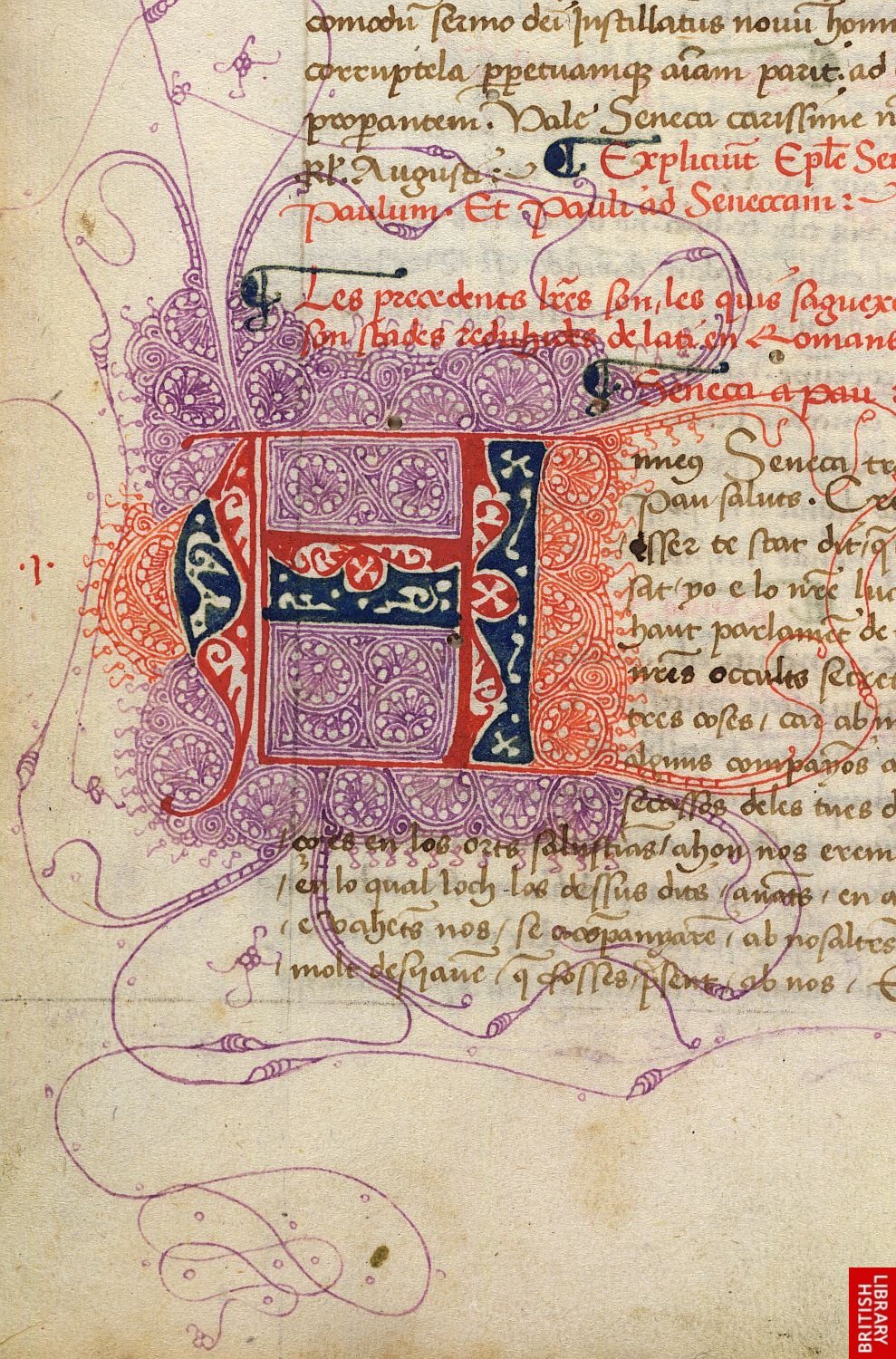
This combo initial/border treatment is from a book dealing with time, astrology, and astronomy, from Harley MS 4350, f. 4.

A more modern usage of the illuminated manuscript style is seen here in an illuminated vellum manuscript entitled Les Heures Choisies, 1901.
This article was last modified on September 29, 2022
This article was first published on August 30, 2017




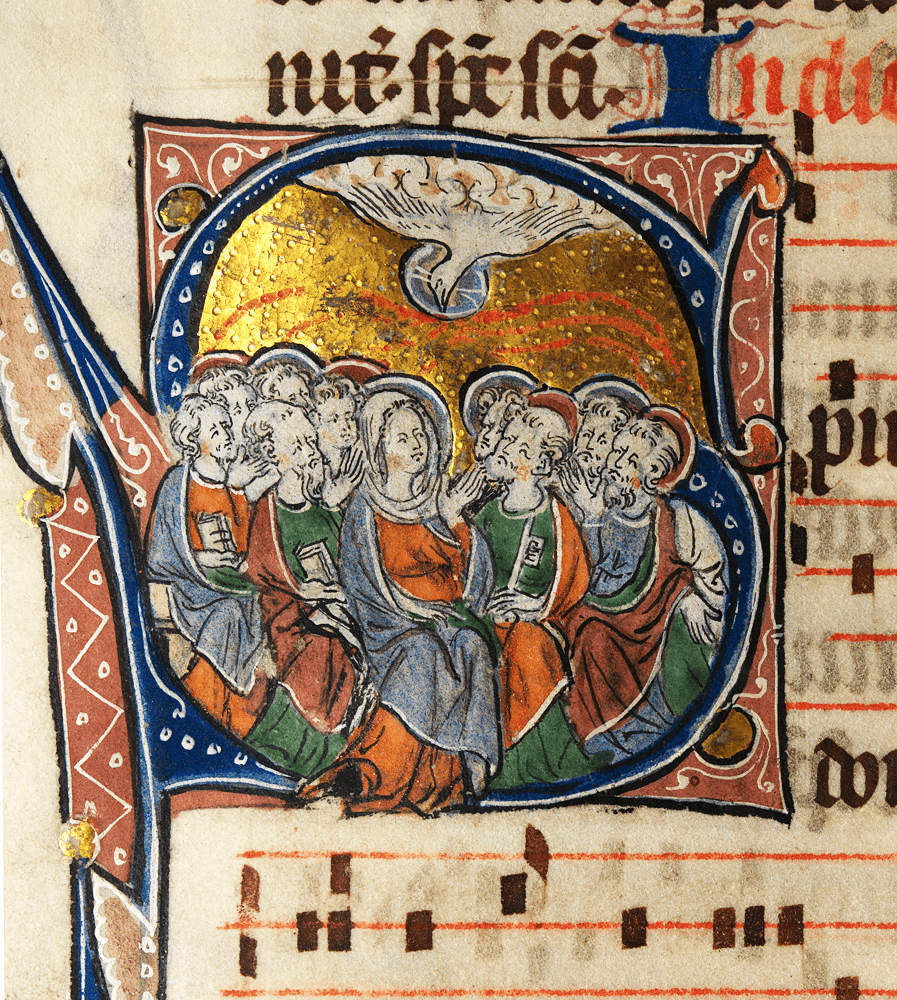







What a beautiful article! It was wonderful to hear the stories behind so many familiar images, and to see the process behind making them. Thank you!
Several years ago, I was in London for a single day. I went to the St. Bride Printing Library. It happened to be the last day of an exhibition on illuminated manuscripts. There’s nothing like being in the presence of such beautiful, original artistry on paper. I felt lucky to catch the exhibition that day, and lucky to catch this article today. Thank you.
Thank you. Such an interesting article.
Beautiful!
Now what techniques would you recommend for “simulating” (you really can’t duplicate) illuminated manuscripts with modern publishing software?
Not sure it can be done with software, but I am not an illustrator so I can’t say for sure. Check out the previous comment regarding https://www.saintjohnsbible.org/. They reproduced these effects in 1998! Ilene
You might want to check out the St. John’s illuminated Bible, a new version of the process. Worth an article, too.
Thanks, Phil!
So I guess even back then, they had Illustrator! (For Mac, no doubt.) :)
Beautifully written and illuminated! Thank you!
From one Ilene to another, thanks for the kudos!